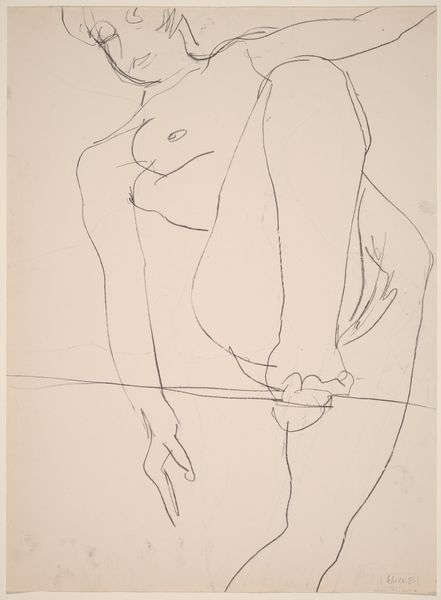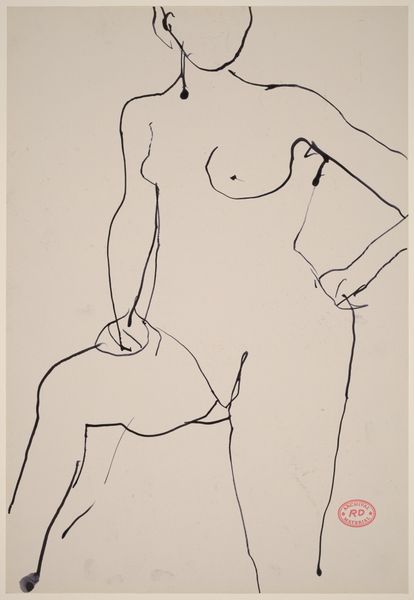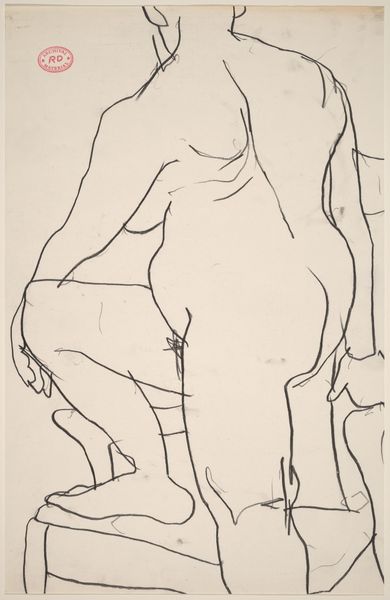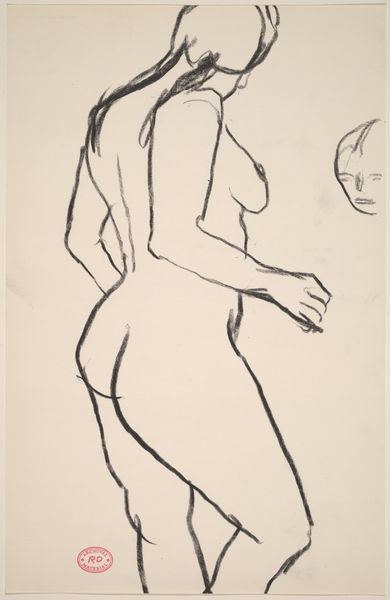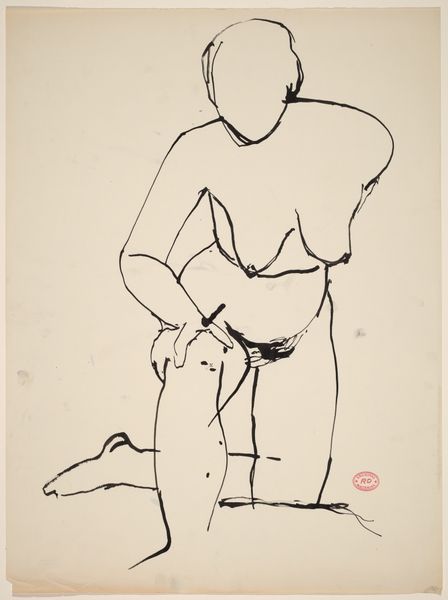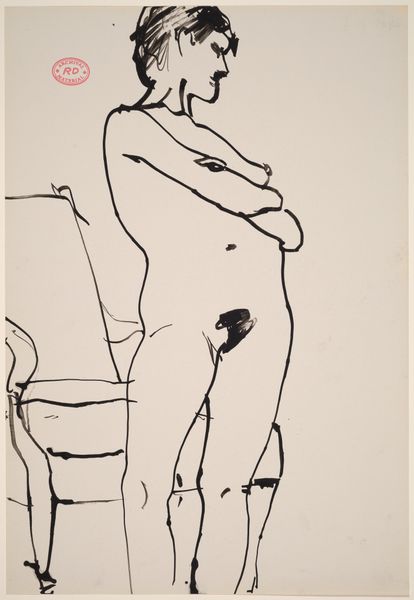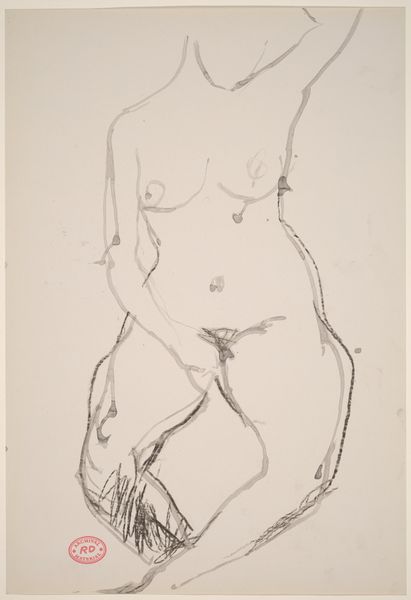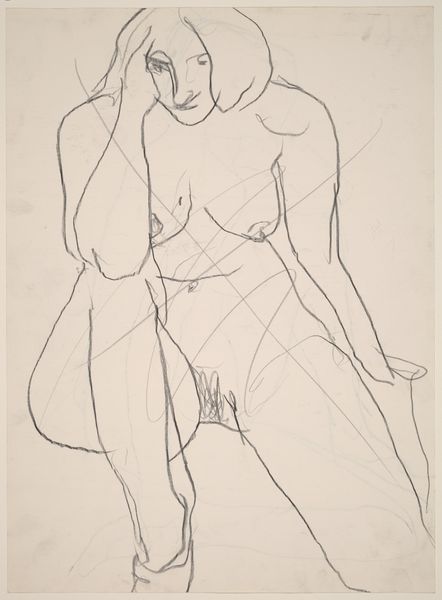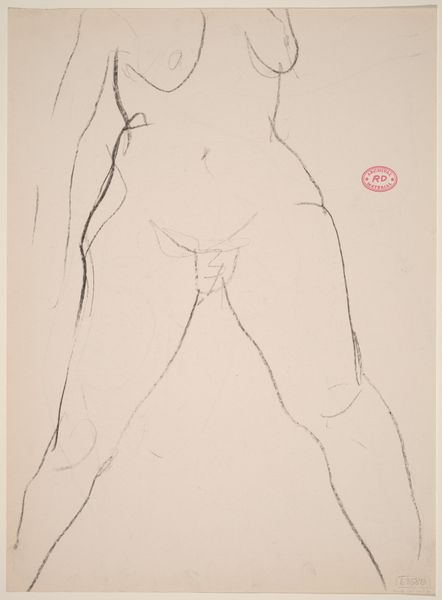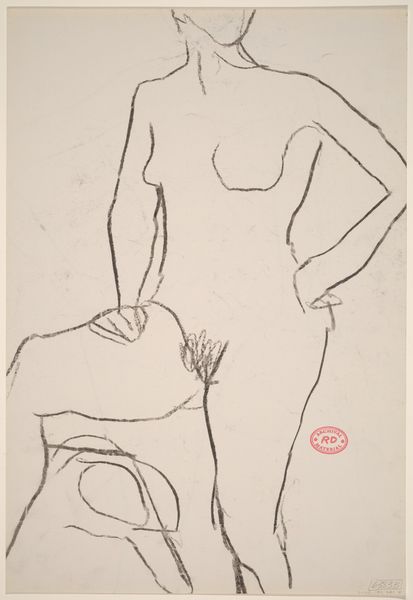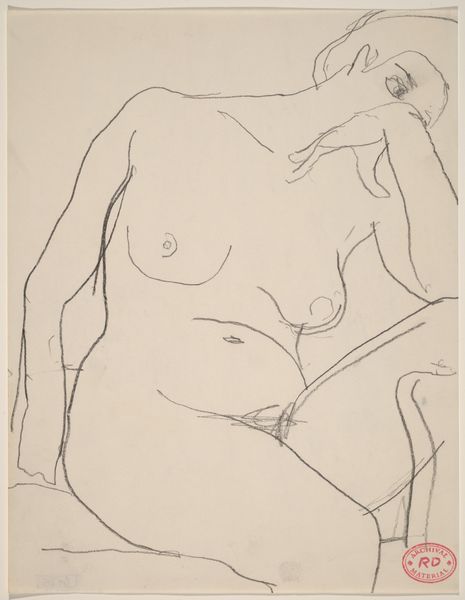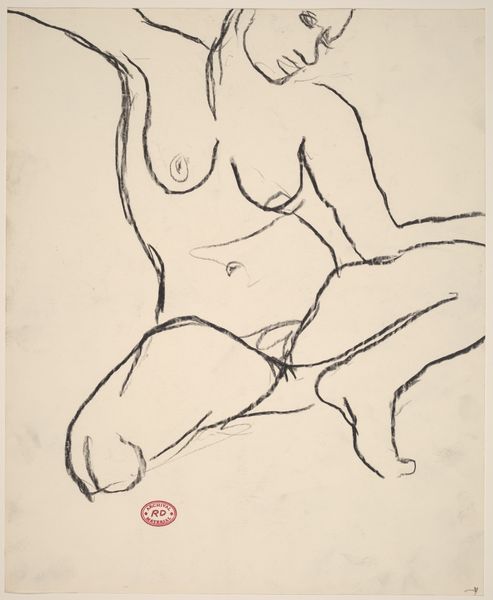![Untitled [woman] by Richard Diebenkorn](/_next/image?url=https%3A%2F%2Fd2w8kbdekdi1gv.cloudfront.net%2FeyJidWNrZXQiOiAiYXJ0ZXJhLWltYWdlcy1idWNrZXQiLCAia2V5IjogImFydHdvcmtzLzQ4MWY2ZTNmLWQ0YTEtNDNiOS05Nzk0LTMyOTE1YmMwNTJiMy80ODFmNmUzZi1kNGExLTQzYjktOTc5NC0zMjkxNWJjMDUyYjNfZnVsbC5qcGciLCAiZWRpdHMiOiB7InJlc2l6ZSI6IHsid2lkdGgiOiAxOTIwLCAiaGVpZ2h0IjogMTkyMCwgImZpdCI6ICJpbnNpZGUifX19&w=3840&q=75)
drawing
#
drawing
#
figuration
#
bay-area-figurative-movement
#
nude
Dimensions: overall: 43.2 x 27.9 cm (17 x 11 in.)
Copyright: National Gallery of Art: CC0 1.0
Curator: Let’s discuss Richard Diebenkorn’s “Untitled [woman]”, a drawing from the period of 1955 to 1967. What grabs you first? Editor: It's the raw simplicity. Just the charcoal line against the stark paper. It feels incredibly immediate and unburdened. How should we interpret Diebenkorn's technique and focus here? Curator: It is crucial to consider the materiality. What kind of charcoal? The paper? Their texture impacts the final piece greatly. We must explore how these physical choices shape our viewing. What about the act of mark-making? Do the rapid, somewhat uneven lines undermine the historical fetishizing of female bodies, suggesting a more demythologized depiction of women as they are, challenging norms about art and craft? Editor: That's interesting - so you see the technique as challenging traditional representation itself? But could his choices have other roots? Curator: Certainly. Diebenkorn made the conscious decision to work in two dimensions to represent this figure; we should explore if this aligns with abstraction in general as a rejection of capitalistic notions of image production or of a more personal rejection of artistic trends. Also, we might delve into his access to these materials at that time, as these choices can be limiting or a path for greater expressive options. It seems likely there’s much here that challenges both the viewer and the artist in terms of its creation and significance. Editor: Viewing it through the lens of materials really opens up new dimensions to its interpretation. Thanks! Curator: Indeed! This has definitely offered a richer understanding of the socio-economic implications of Diebenkorn's approach.
Comments
No comments
Be the first to comment and join the conversation on the ultimate creative platform.
